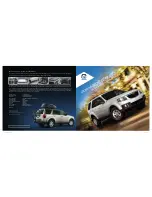
Inspection and adjustment:
Establish a regular schedule for periodic
cleaning, lubrication and adjustment inspection based on vehicle use.
Exact maintenance intervals are difficult to predetermine due to vehicle
applications and operating conditions. If you are uncertain of the proper
schedule for your vehicle, contact an authorized dealer.
Regular inspections should include:
•
Periodic checking (every service interval) of push rod travel or brake
adjustment. This is essential for effective braking. Brake chamber
push rods on original equipment chambers now incorporate an orange
paint marker near the base of the push rod as a stroke indicator to
aid in adjustment checks. If the push rod is clean and the brakes are
out of adjustment, you can see the orange marker protruding from
the chamber when the brakes are applied.
•
Checking the brake lining (every service interval). When brake lining
or blocks wear within 1/16th inch (1.6 millimeters) of rivets, replace
the brake linings. A qualified technician should perform this
inspection and keep to instructions provided by the service manual.
Do not back off or disconnect the front brakes so that they are less
effective, letting the rear brakes do all the stopping of your vehicle. Do
not overlook the brakes on the trailer either. Brake condition on the
trailer is just as important as the tractor. Proper brake balance on trucks
and tractor-trailers is essential for effective braking.
Once a year, inspect the entire brake system:
•
Rubber components for deterioration. A qualified technician should
inspect these components and replace them as necessary.
Replacement intervals vary according to the severity and length of
vehicle service.
•
Condition of brake drums, brake chambers and slack adjusters.
•
System for air leaks.
•
Hose or pipes for rust, damage and deterioration.
•
Operation of service and parking brakes.
Periodically inspect parts such as air brake chamber diaphragm, air
compressor and air cleaner. Replace any parts if you can consider them
unserviceable.
Air dryer:
Climactic conditions affect performance of desiccant or
after-cooler type air dryers. You must establish a maintenance schedule
for each specific operation.
The use of an air dryer on a vehicle does not eliminate the need to drain
the air reservoirs periodically.
202
Maintenance
2015 F-650/750
(f67)
Owners Guide gf
(ownloose)
, 1st Printing, December 2013
Canadian_French
(fr_can)
















































